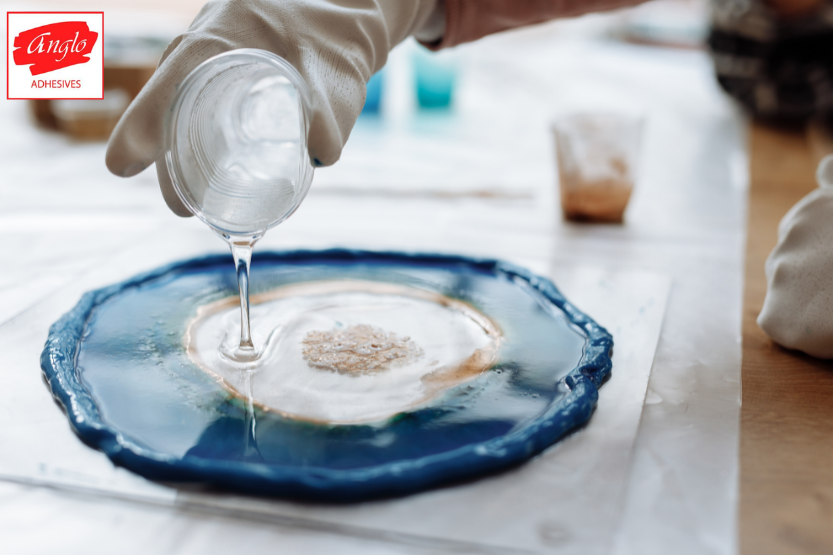Blog
Bonding Resin for Metal: A Guide to Strong and Durable Joints

Bonding resin is a versatile adhesive used to create strong and durable joints between metal surfaces. Thus, it offers a reliable alternative to traditional mechanical fastening methods like welding or riveting. This article will explore the various types of bonding resin available, their applications, and best practices for achieving optimal results.
Understanding Bonding Resin
Bonding resin is a synthetic material that forms a strong adhesive bond when cured. Further, it is typically composed of a resin base and a hardener. When mixed together, the resin and hardener undergo a chemical reaction that results in a durable, solid bond.
Types of Bonding Resin
There are several types of bonding resin available for metal applications, each with its own unique properties and characteristics:
- Epoxy Resin: Epoxy resin is a popular choice for bonding metal due to its strong adhesive properties, durability, and resistance to chemicals and environmental factors.
- Cyanoacrylate Resin (Superglue): Cyanoacrylate resin, commonly known as superglue, is a fast-acting adhesive that forms a strong bond almost instantly. However, it may not be suitable for all metal applications, especially those that require high-temperature resistance.
- Methacrylate Resin: Methacrylate resin is another type of adhesive that offers good strength and durability. It is often used for bonding metals to nonmetals, such as plastic or ceramic.
Applications of Bonding Resin
Bonding resin has a wide range of applications in various industries, including:
Automotive Industry
- Structural repairs: Bonding resin can be used to repair cracks, dents, or corrosion damage in car bodies, chassis, and other metal components.
- Reinforcement: It can be used to reinforce weakened areas or add structural support to metal components.
- Component assembly: Bonding resin can be used to join metal components in the manufacturing process, such as attaching panels, trim pieces, or brackets.
Aerospace Industry
- Aircraft structures: Bonding resin is used to join metal parts in aircraft structures, such as wings, fuselages, and landing gear.
- Repair and maintenance: It can be used to repair damaged metal components in aircraft, ensuring safety and structural integrity.
- Composite materials: Bonding resin is often used in conjunction with composite materials to create lightweight and strong structures.
Industrial Manufacturing
- Machinery assembly: Bonding resin can be used to join metal components in various types of machinery. Hence, including engines, pumps, and industrial equipment.
- Equipment repair: It can be used to repair damaged metal components in machinery, extending the lifespan of equipment.
- Product assembly: Bonding resin can be used in the assembly of various products, such as appliances, electronics, and automotive parts.
Repair and Maintenance
- Household items: Bonding resin can be used to repair damaged metal objects around the home, such as tools, appliances, or furniture.
- Metal sculptures: It can be used to repair cracks or damage in metal sculptures and artwork.
- Industrial equipment: Also, bonding resin can be used to repair damaged metal components in industrial equipment. Thus, preventing downtime and costly repairs.
Best Practices for Using Resin
To ensure optimal results when using bonding resin for metal, follow these best practices:
- Clean the Surfaces: Thoroughly clean the metal surfaces to be bonded to remove any dirt, grease, or contaminants.
- Prepare the Surfaces: Depending on the type of metal, you may need to roughen the surfaces to improve the adhesive bond.
- Mix the Resin Properly: Follow the manufacturer’s instructions when combining the resin and hardener. Moreover, ensure that the two components are mixed thoroughly to achieve the desired strength and curing time.
- Apply the Resin Evenly: Apply the mixed resin evenly to the prepared surfaces. Also, do not apply too much or too little resin.
- Clamp or Weight: Once the resin is applied, clamp or weight the metal parts together to ensure proper alignment. Hence, prevent movement during the curing process.
- Allow for Curing: Allow the resin to cure completely according to the manufacturer’s instructions. Avoid disturbing the bonded parts during the curing process.
Anglo Adhesives Can Elevate Your Metal Bonding Solutions
Bonding resin stands out as a highly adaptable and powerful adhesive solution, ideal for forging robust and long-lasting connections between metal surfaces. Furthermore, its effectiveness lies in its ability to cater to various bonding needs through its diverse formulations. By gaining a comprehensive understanding of the different types of bonding resins and adhering to established best practices, you can ensure superior results in your metal bonding projects.
For those seeking to maximise the performance of their metal bonding applications, Anglo Adhesives is poised to provide invaluable support. With a wide range of specialised bonding resins and a deep expertise in adhesive technology, Anglo Adhesives offers tailored solutions to meet your specific requirements. Our commitment to innovation and quality ensures that you will find the right adhesive product and guidance needed to achieve optimal results and enhance the durability and strength of your metal joints.